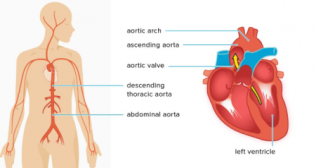
Life After Arthroscopy
What is Arthroscopy?
Arthroscopy is a surgical procedure used to visualize, diagnose and treat problems inside a joint. In an arthroscopic examination, an orthopedic surgeon makes a small incision in the patient’s skin and then inserts pencilsized instruments that contain a small lens and lighting system to magnify and illuminate the structures inside the joint. Light is transmitted through fiber optics to the end of the arthroscope that is inserted into the joint. By attaching the arthroscope to a miniature television camera, the surgeon is able to see the interiors of the joint through this very smallincision rather than making a large incision. The television camera attached to the arthroscope displays the image of the joint on a television screen, allowing the surgeon to look around the knee. The surgeon can determine the amount or type of injury, and then repair or correct the problem, if necessary.
Why is Arthroscopy necessary?
Diagnosing joint injuries and disease begins with a thorough medical history, physical examination, and X- ray. Additional tests such as an MRI or CT scan may also be needed. Through the arthroscope, a final diagnosis is made which may be more accurate than through “open” surgery or from X-ray studies.
What are the normal joint conditions diagnosed through Arthroscopy?
Some of the most frequent conditions found during arthroscopic examinations of joints are:
Inflammation Synovitis – Inflamed lining (synovium) of the knee, shoulder, elbow, wrist, or ankle.
Injury – Acute and Chronic
Shoulder – Rotator cuff tendon tears, impingement syndrome.
Knee – Meniscal tears, chondromalacia (wearing or injury of cartilage cushion), and anterior cruciate ligament tears with instability.
Loose bodies of bone and/or cartilage knee, shoulder, elbow, ankle or wrist.
Although all the joints can be viewed with an arthroscope, six joints are most frequently examined with this instrument. These include the knee, shoulder, elbow, ankle, hip and wrist. As engineers make advances in electronic technology and orthopedic surgeons develop new techniques, other joints may be treated more frequently in the future.
How is Arthroscopy performed?
Under suitable anesthesia, a small incision (about the size of a buttonhole) will be made to insert the arthroscope. Several other incisions may be made to see other parts of the joint. Corrective surgery is performed with specially designed instruments that are inserted into the joint through accessory incisions. With development of better instrumentation and surgical techniques, many conditions today can be treated arthroscpically. For instance, most meniscal tears in the knee can be treated successfully with arthroscopic surgery.
Few problems associated with arthritis can also be treated. Several disorders are treated with a combination of arthroscopic and standard surgery.
- Rotator cuff procedure
- Repair or resection of torn cartilage from knee
- Repair or resection of torn cartilage from knee
- Reconstruction of anterior cruciate ligament in knee
- Removal of inflamed lining (synovium) in knee, shoulder, elbow wrist or ankle
- Removal of loose bone or cartilage in knee, shoulder, elbow or wrist
The extent of surgery required and recovery time will depend on the complexity of your problem. Occasionally, during arthroscopy, the surgeon may discover that the injury or disease cannot be treated adequately with arthroscopy alone. The extensive “open” surgery may be performed while you are still anesthetized, or at a later date after you have discussed the findings with your surgeon.
What are the possible complications? Complications may occur occasionally during or following arthroscopy. Infection and instrument breakage are the most common complications, but occur in far less than 1% of all arthroscopic procedures.
What are the advantages? Arthroscopic surgery is easier on the patient than “open” surgery. Most patients have their arthroscopic surgery as outpatients and are home several hours after the surgery.
Recovery after arthroscopy?
The small punctured wounds take several days to heal. The operative dressing can usually be removed the morning after surgery and adhesive strips can be applied to cover the small healing incisions.
Although the punctured wounds are small and pain in the joint that underwent arthroscopy is minimal, it takes several weeks for the joint to maximally recover. A specific activity and rehabilitation program may be suggested to speed up your recovery and protect future joint function.
It is not unusual for patients to go back to work or school or resume daily activities within a few days. Athletes and others who are in good physical condition may in some cases return to their athletic activities within a few weeks.
If you are recommended for Arthroscopy, please read further to prepare yourself. Your doctor has recommended Arthroscopy to determine the cause of your knee pain and, possibly, to correct it. As you won’t require overnight nursing care after your arthroscopy, a same day surgical facility or an outpatient unit at your local hospital is the ideal environment for your doctor to perform this procedure.
These facilities provide quality care without the inconvenience and expenses of an overnight stay. Following your arthroscopy, you’ll recover comfortably in your own home, in the company of family and friends.
BEFORE SURGERY
Medical History: The nurse may go through your medical history (including medications and allergies), and make certain that you’ve signed the consent forms.
Change Clothes You’ll have to wear a patient gown for surgery. If you wear dentures or contact lenses, you may be asked to remove them.
DURING SURGERY
In the operating room the anesthesiologist or nurse anesthetist may start an IV (intravenous). You’ll receive either local or general anesthesia.
Your Arthroscopy: After your anesthesia takes effect, the doctor makes two or three tiny incisions in your knee. A solution is injected to distend the knee cavity, and the arthroscope and a small tube with a powerful light and lens is inserted. The doctor examines your knee joint to determine what is causing the problem. Often, the injury can be repaired at this time, using special surgical instruments. Following arthroscopy, the instruments are removed, incisions closed, and your knee bandaged.
AFTER SURGERY
Dressing – After surgery, the small incisions are covered with a dressing.
In Recovery: After surgery, you’ll be taken to the recovery area where a nurse will monitor your progress. Once you’re awake, you’ll be asked to sit up and drink liquids. Many patients need little or no pain killers.
Going Home
You’ll be able to go home the same day as your surgery. Be sure to have a responsible adult drive you. If you had general anesthesia, you may feel drowsy or nauseated.
Discharge instructions: Your doctor will tell you how much weight to bear on your leg and may advise
crutches. Keep your leg elevated, and apply an ice pack to reduce swelling. Keep your dressing dry to decrease the chance of infection. Before being discharged, you will be given instructions about exercises you should do to aid your recovery.
Call your doctor: If you have severe pain unrelieved by medications. You develop a swelling uncontrolled with ice and elevation. You develop a temperature of 101°F/38.3°C or greater.
SURGERY CHECK-LIST
This check-list will help you prepare for your surgery. Check each item to avoid cancellation or unnecessary delays.
- You also have some responsibilities.
- Arrival time varies, so check with the surgical facility to allow sufficient preparation time.
- Insurance forms or cards should be brought with you. Pre-operative history from your doctor are usually necessary for any procedure requiring general anesthesia.
- Lab tests may consist of urine and blood samples. These may be done on the day of the surgery or 1-2 days in advance.
- Wear comfortable clothing. Leave all your jewelry and valuables at home.
- Arrange for a ride home beforehand with a responsible adult, since you may feel drowsy after surgery.
- Don’t eat anything after midnight or prior to the surgery.
- Don’t drink anything after midnight (even water) or have candy or chewing gum. This reduces the likelihood of you vomiting during surgery.
- If you feel ill or have a fever, call your doctor. Your doctor will decide if it’s safe to proceed with the surgery.
FOLLOW – UP CARE
Your doctor will arrange a follow – up visit, when your knee will be checked to ensure if it’s healing well. If sutures were used, they’ll be removed. For a complete and speedy recovery, be sure to follow your doctor’s instructions



















